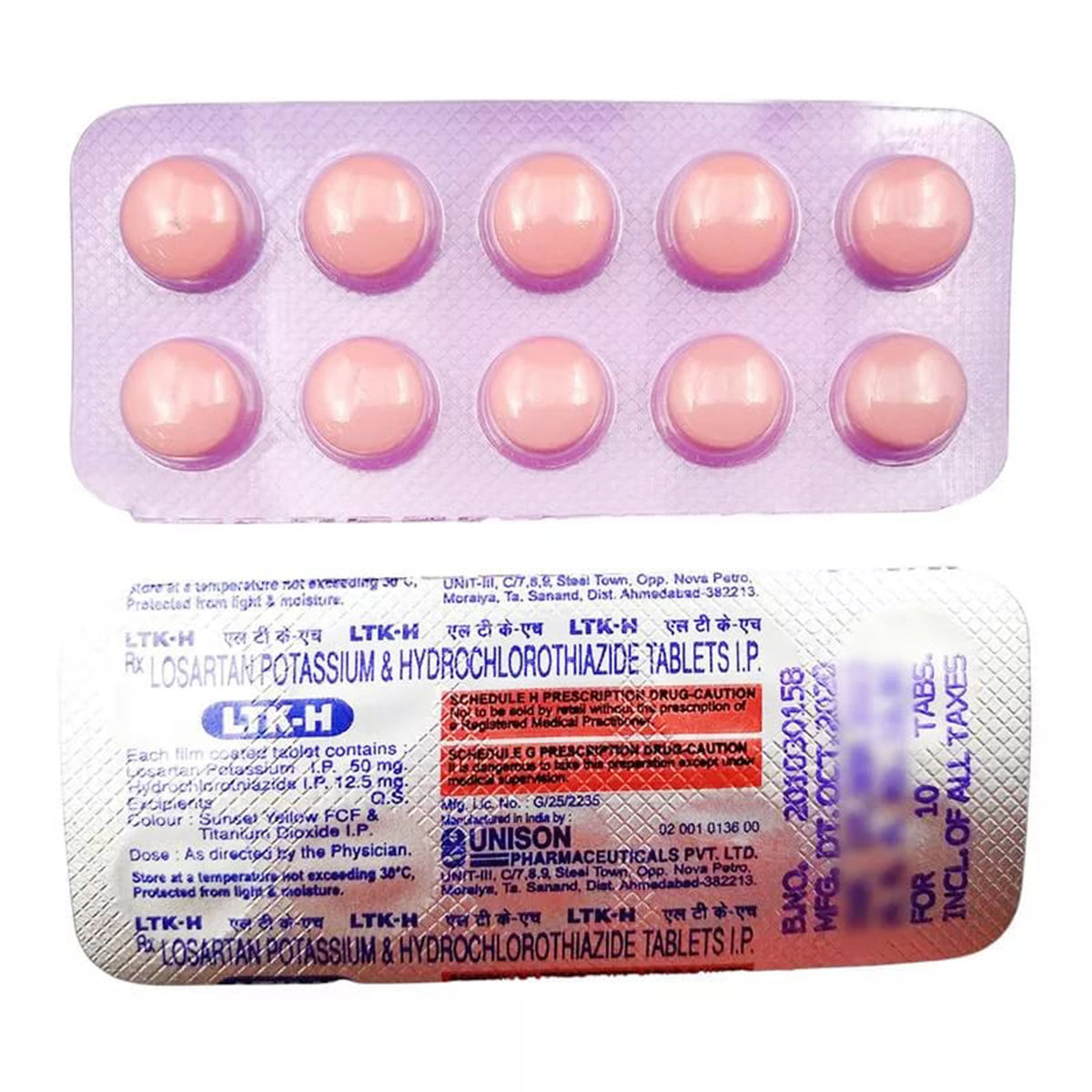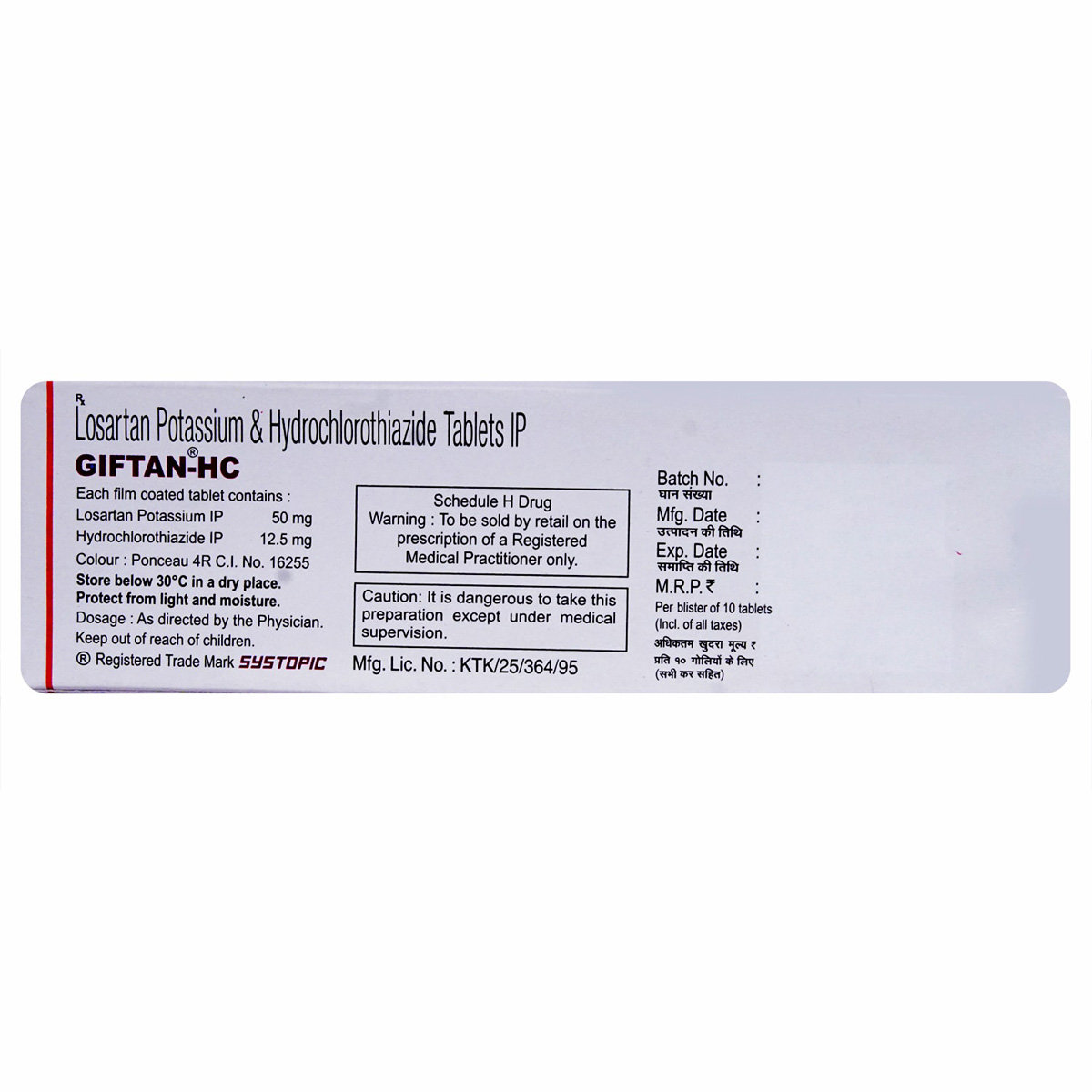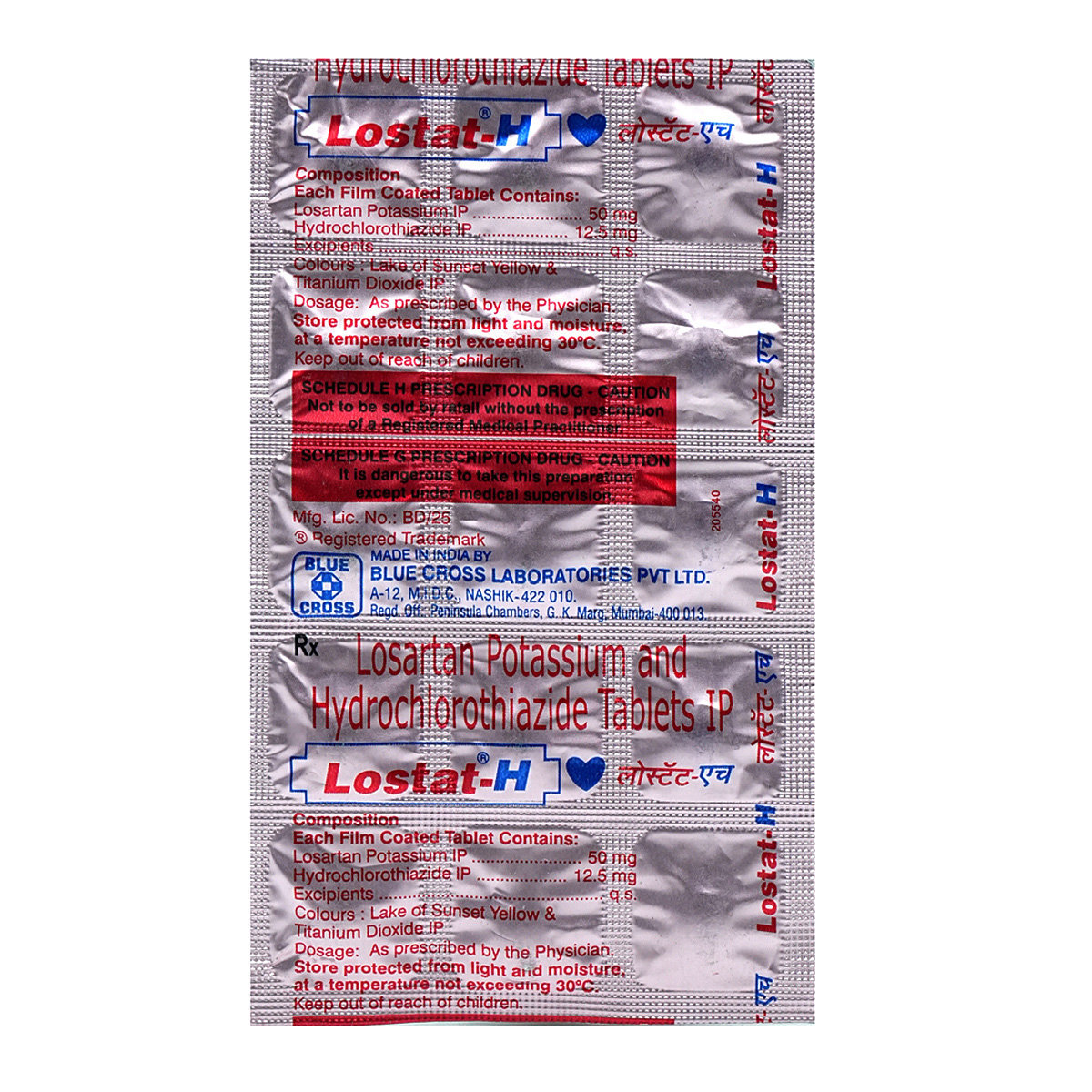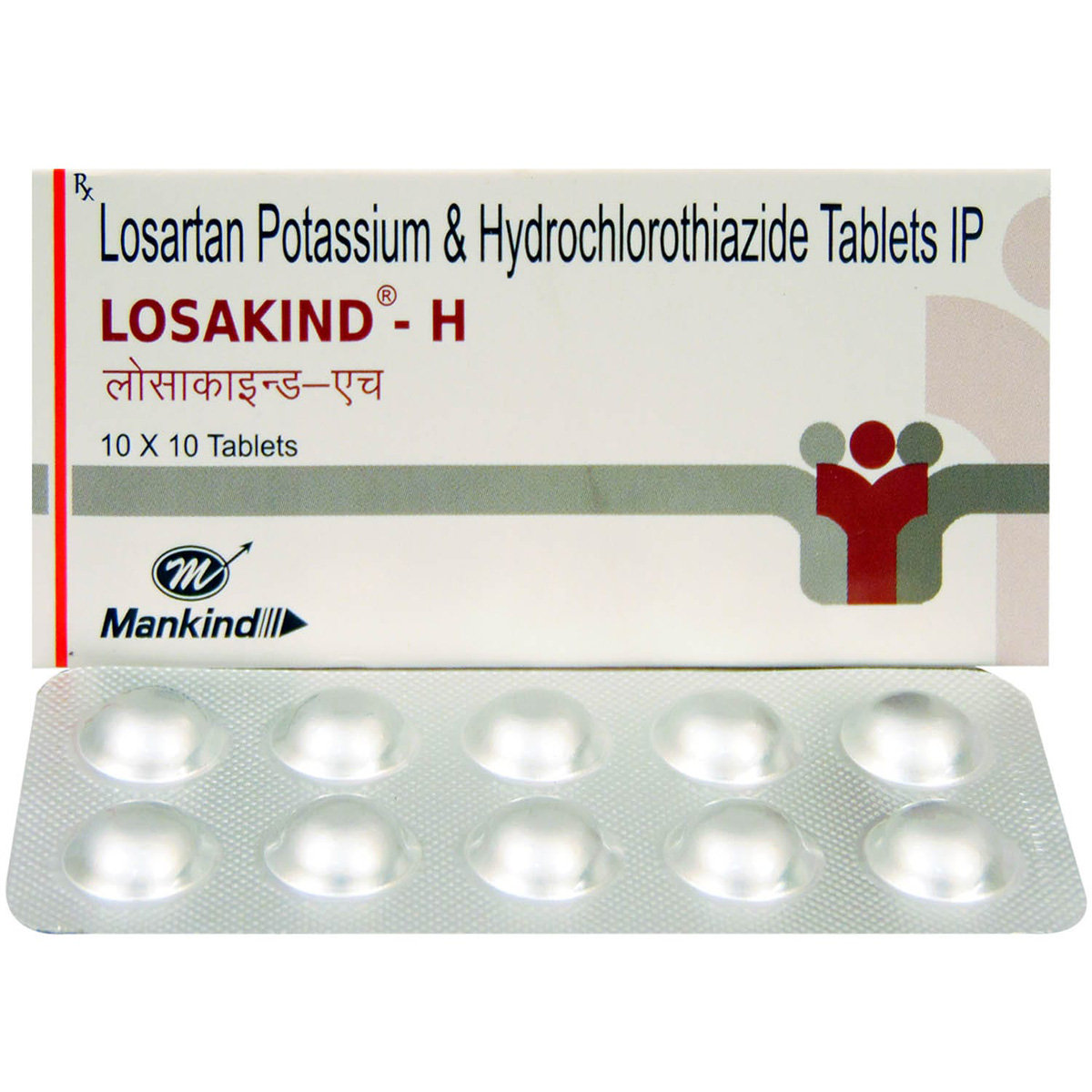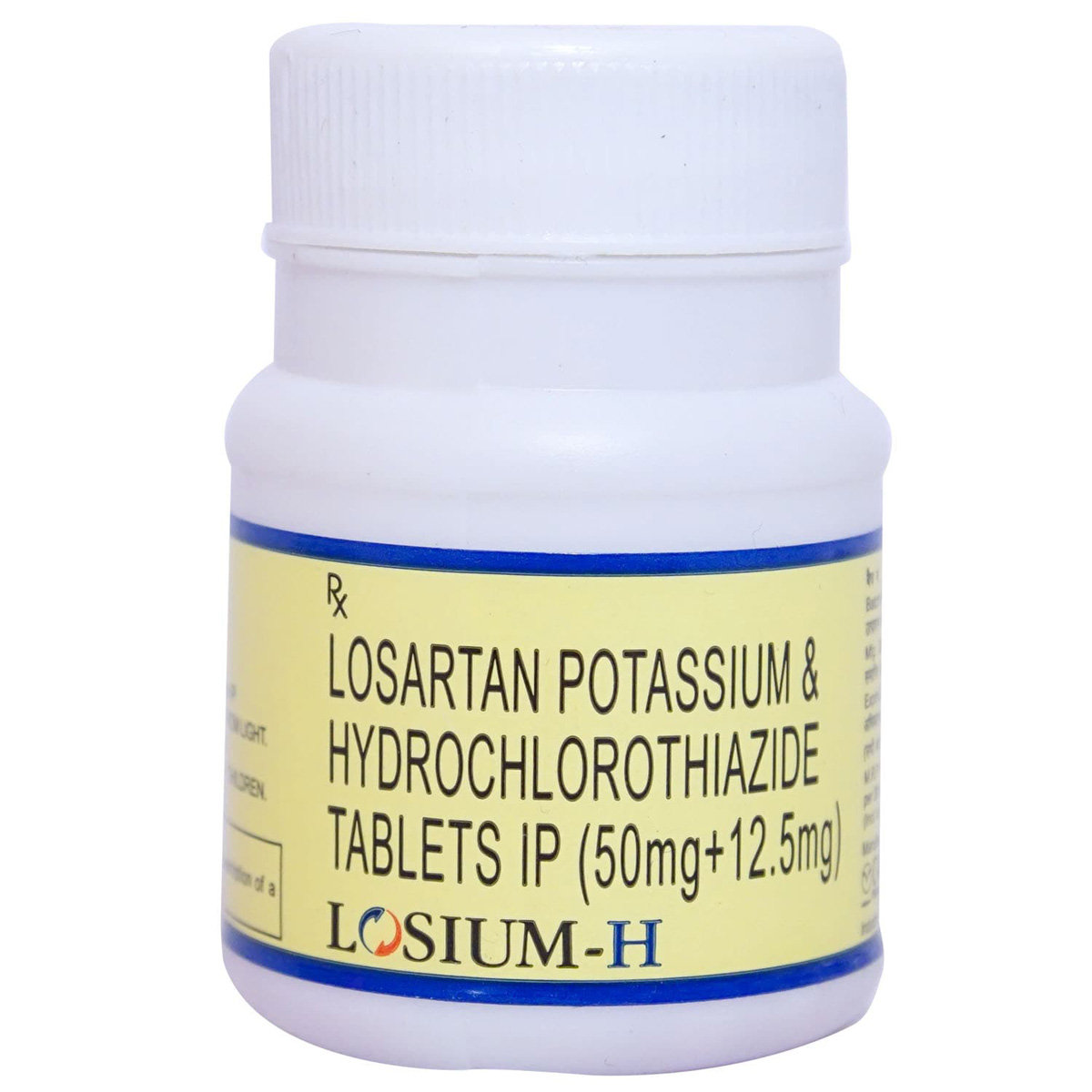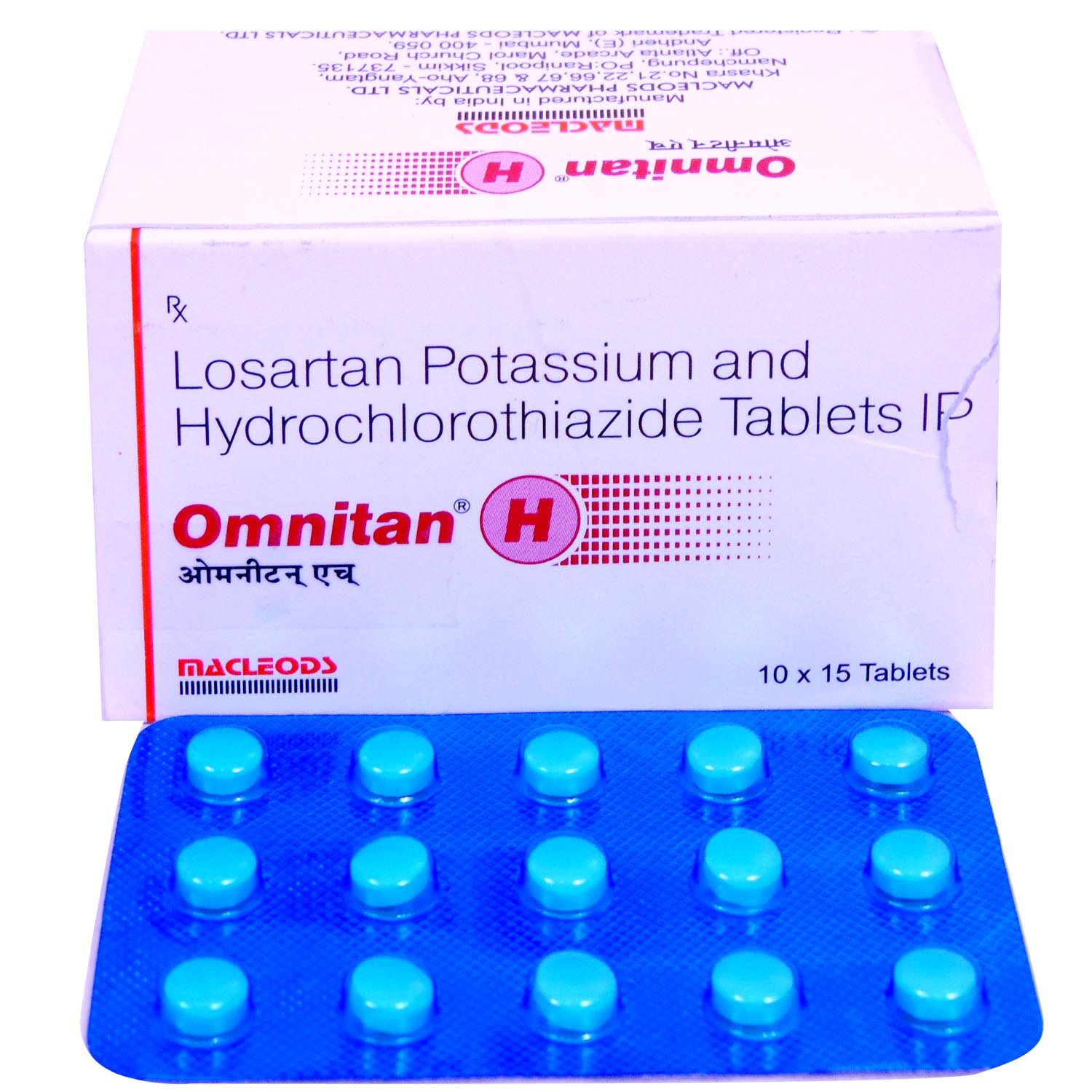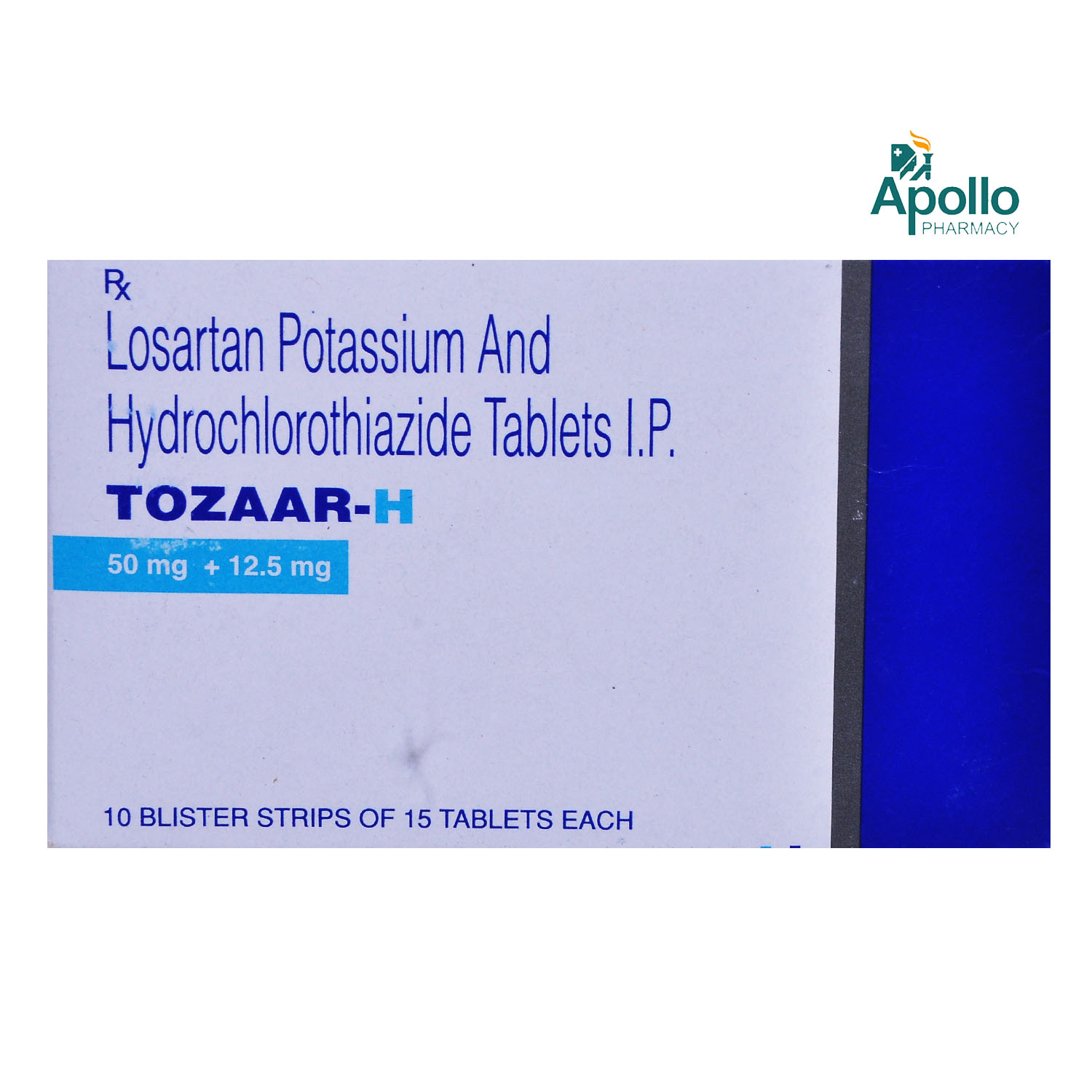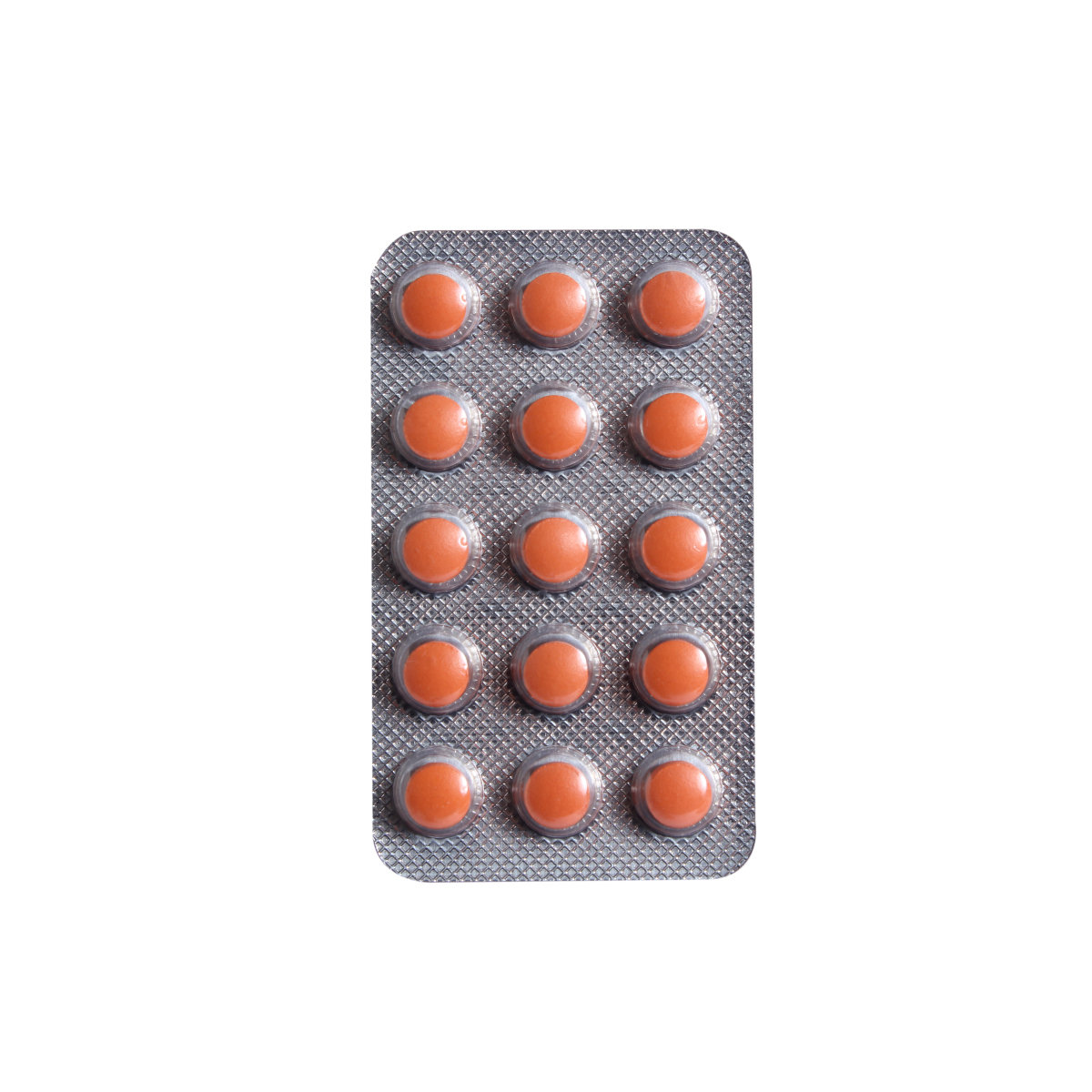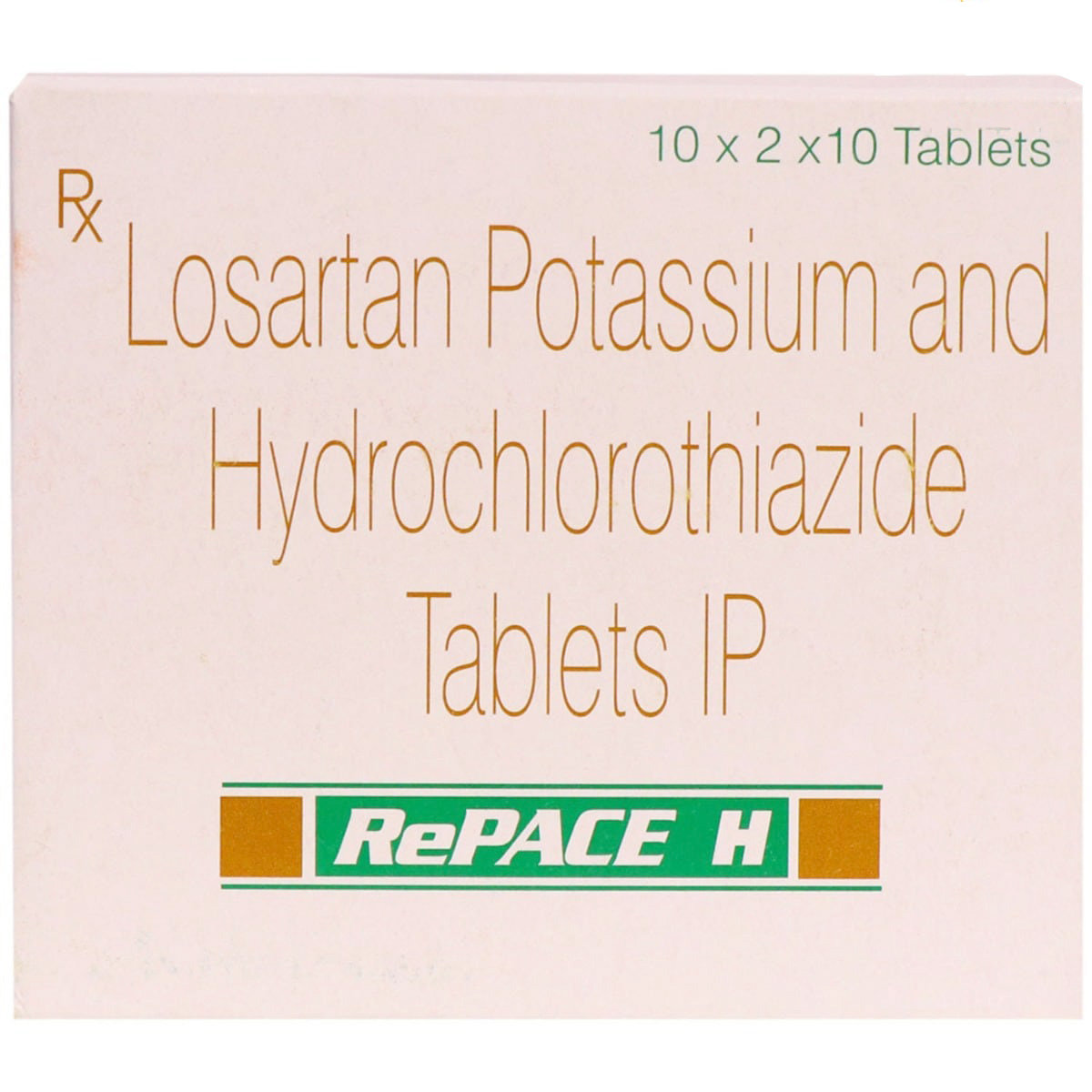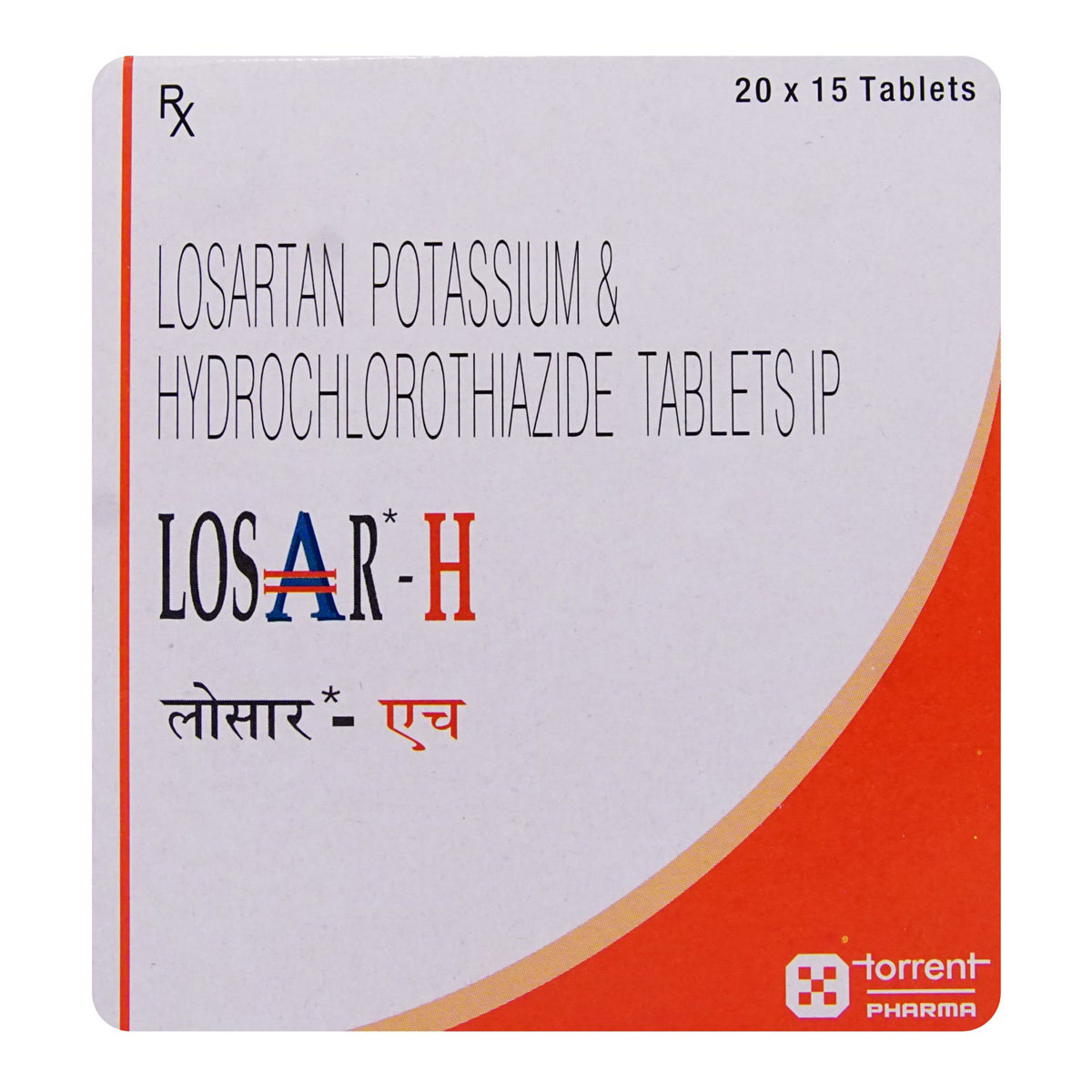Covance D Tablet 10's
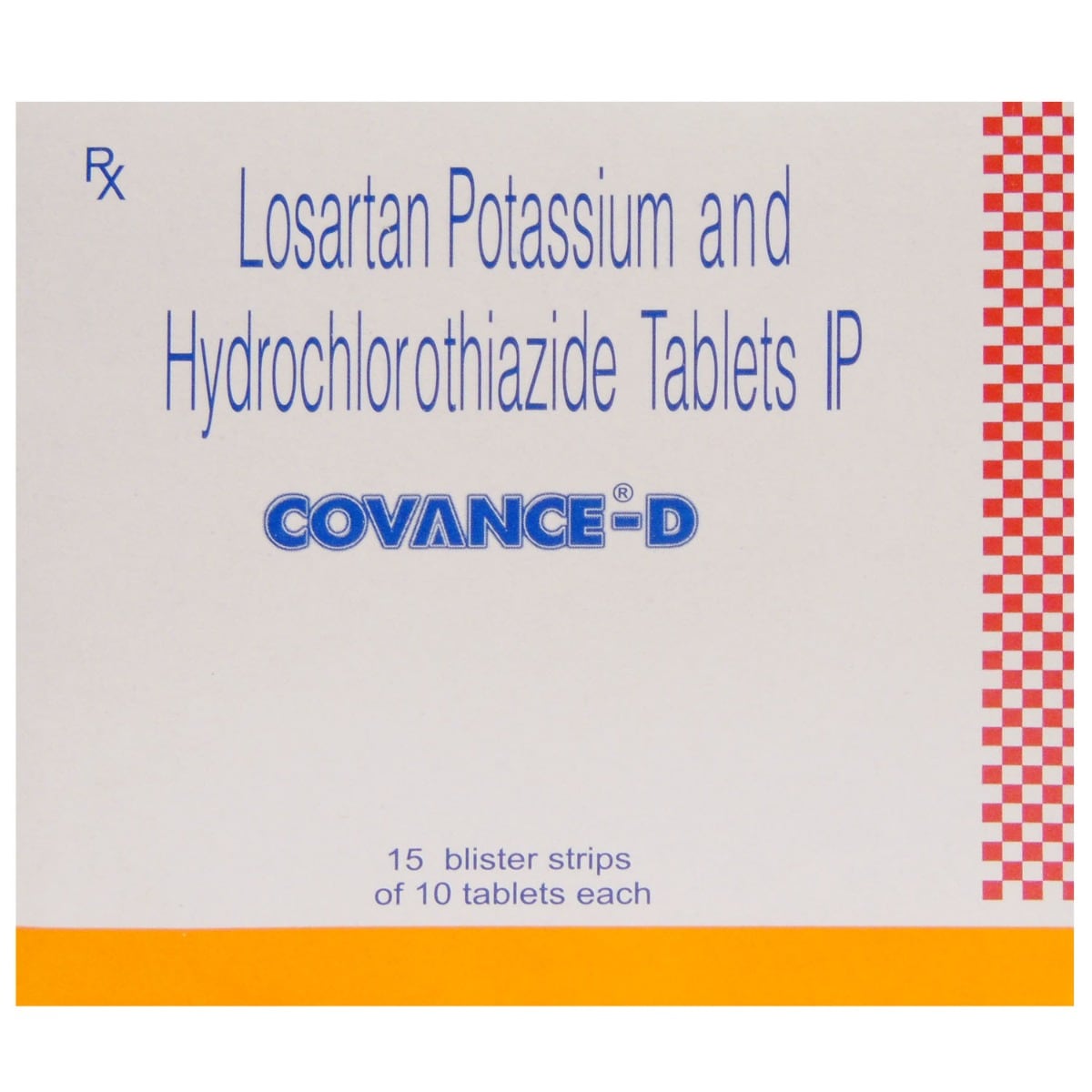
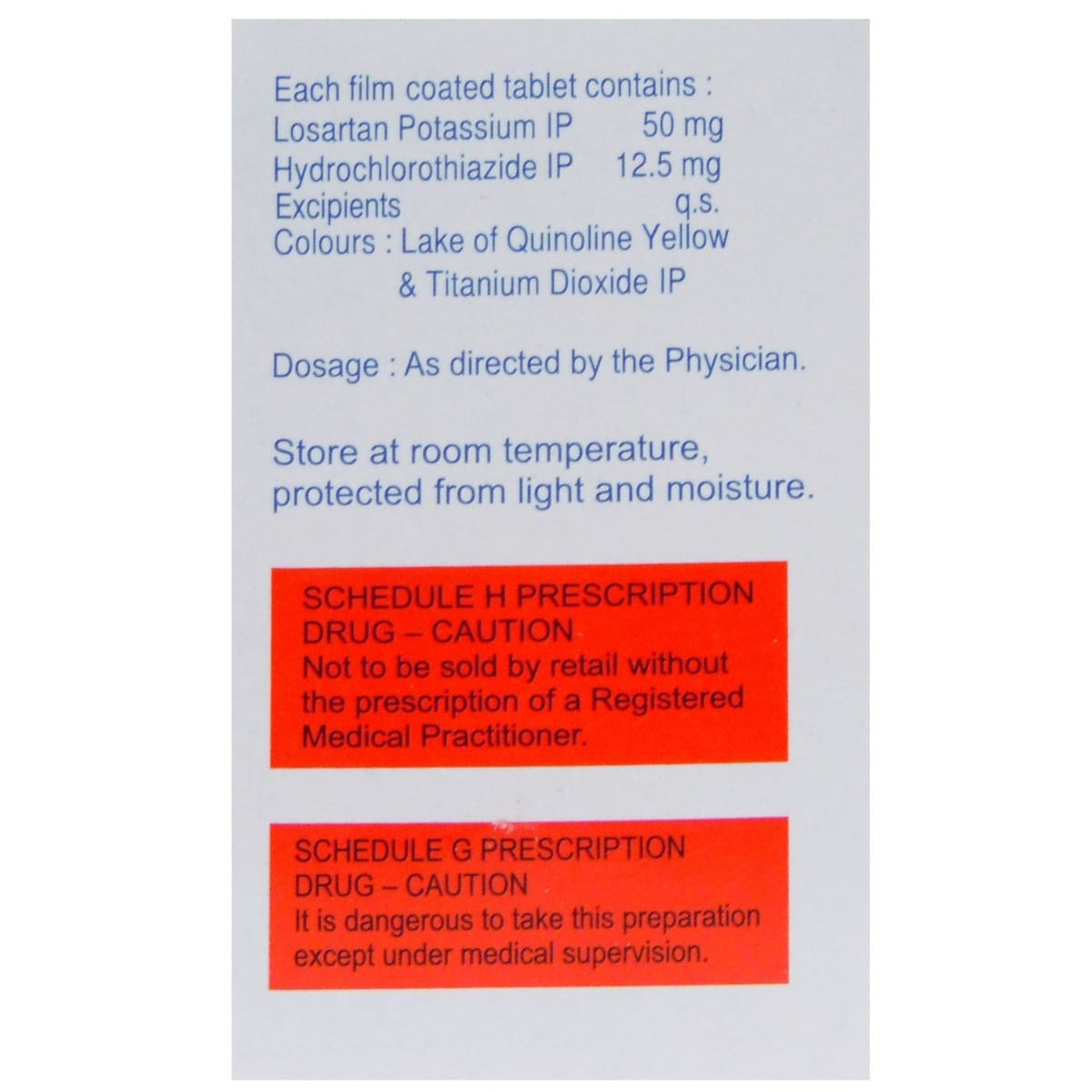
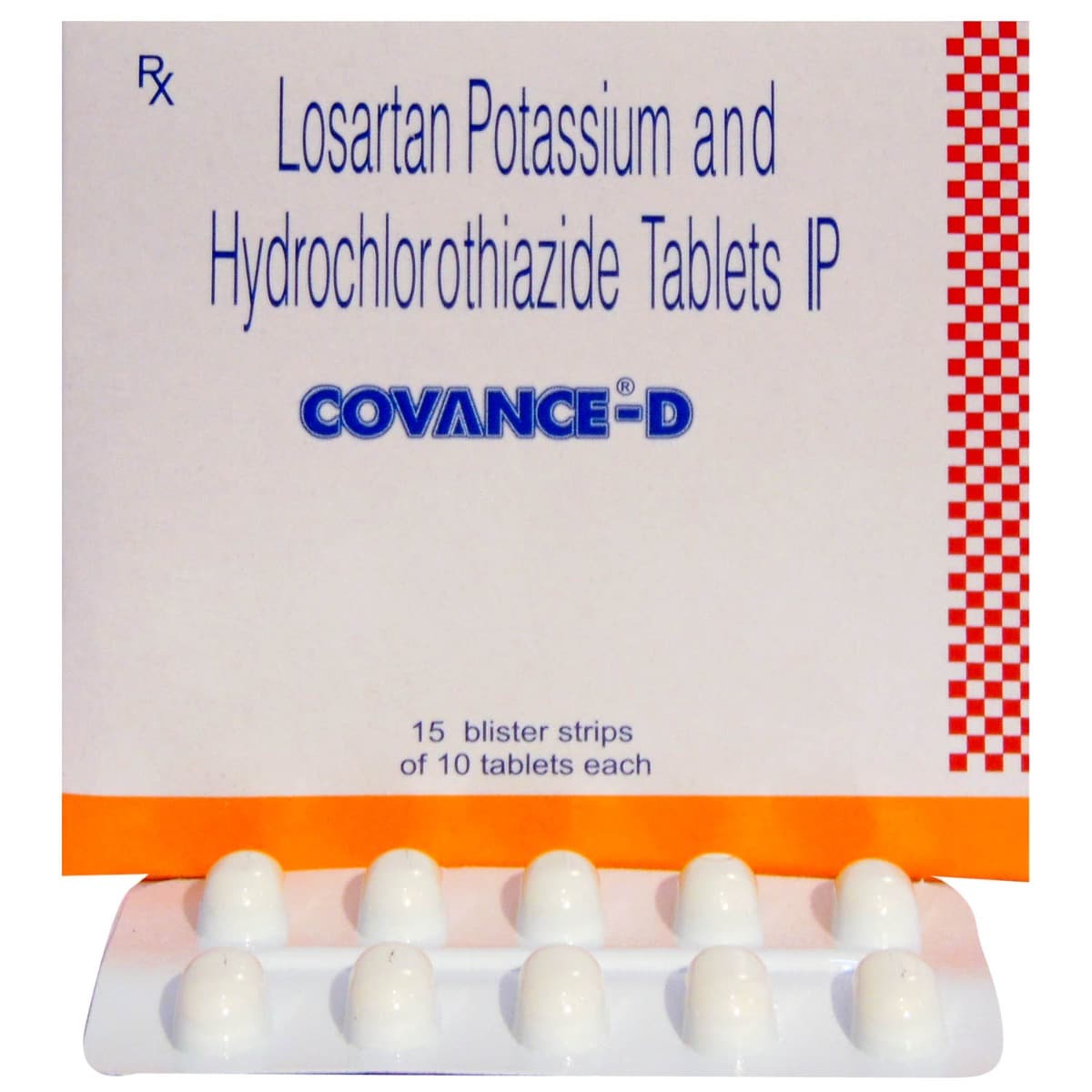



MRP ₹174
(Inclusive of all Taxes)
₹26.1 Cashback (15%)
Selected Pack Size:10
10 ₹156.6
(₹15.66 per unit)
In Stock
Provide Delivery Location
Online payment accepted
 Prescription drug
Prescription drugWhats That
Composition :
Manufacturer/Marketer :
Consume Type :
Expires on or after :
Return Policy :
About Covance D Tablet
Covance D Tablet belongs to the class of anti-hypertensives primarily taken to treat hypertension (high blood pressure) and reduce the risk of stroke in patients with high blood pressure. Covance D Tablet is a combination medication generally used when a single medicine is unable to control high blood pressure. Hypertension or high blood pressure is a life-long or chronic condition in which the force exerted against the artery wall becomes too high. It can lead to the risk of heart diseases, like heart attack and stroke.
Covance D Tablet is a combination of Losartan (angiotensin II receptor antagonist) and Hydrochlorothiazide (thiazide diuretic or water pill). Losartan is an angiotensin receptor blocker that helps to relax and widen the blood vessels (arteries) for easy blood flow to the whole body. Hydrochlorothiazide is a diuretic that prevents excess salt absorption in the body, preventing fluid retention. Together it lowers blood pressure and prevents the risk of stroke, heart attack, and oedema (fluid overload).
You can take Covance D Tablet with food or an empty stomach. It should be swallowed whole with a glass of water. Your doctor will advise you on how often you take your tablets based on your medical condition. You may experience upper respiratory infections, dizziness, feeling tired, nausea, diarrhoea, back pain, and cold/flu symptoms like a cough in some cases. Most of these side effects of Covance D Tablet do not require medical attention and gradually resolve over time. However, if the side effects are persistent, reach out to your doctor.
Do not use potassium supplements or salt substitutes unless your doctor tells you. In rare cases, Covance D Tablet can cause a condition that results in a skeletal muscle problem, leading to further kidney failure. If you notice unexplained muscle pain, dark colour urine, tenderness, or weakness, especially if you also have a fever or unexplained tiredness, immediately contact the doctor. Do not use if you are pregnant or planning to get pregnant; stop taking Covance D Tablet , and tell your doctor immediately. Besides this, you should not use the Covance D Tablet if you cannot urinate. If you have diabetes, do not use Covance D Tablet with any medication that contains aliskiren (a blood pressure medicine). Before taking the Covance D Tablet , tell your doctor if you have ever had liver disease, kidney failure, glaucoma (increased eye pressure), high or low magnesium or potassium levels in your blood, allergies or asthma, lupus (an autoimmune disease), diabetes.
Uses of Covance D Tablet
Directions for Use
Key Benefits
Covance D Tablet is a combination of Losartan (angiotensin II receptor antagonist) and Hydrochlorothiazide (thiazide diuretic or water pill). Losartan is an angiotensin receptor blocker that helps to relax and widen the blood vessels (arteries). Hydrochlorothiazide is a diuretic that prevents excess salt absorption in the body, preventing fluid retention. Together it lowers blood pressure and prevents the risk of stroke, heart attack, and oedema (fluid retention).
Storage
- A blocked nose can be relieved by drinking more water, which helps clear fluids.
- Use saline nasal spray available over the counter to relieve blockage or blow harder to remove the mucus.
- Use nasal strips that can be placed on the nose to widen nostrils and increase airflow.
- Keep a humidifier around to moisten air at home/workplace.
Drug Warnings
Covance D Tablet should not be given to the people allergic to Covance D Tablet , have low blood pressure (less than 90 mm of Hg), or have had a heart attack, kidney disease, or liver disease. It should be used with caution in patients who have diabetes. Besides this, it is contraindicated in low blood pressure (hypotension), cardiogenic shock (sudden stopping of blood flow to the heart), and aortic stenosis (heart valve problem). Do not consume alcohol with Covance D Tablet as it may increase the risk of low blood pressure. Avoid potassium supplements with Covance D Tablet as they may lead to high potassium levels in the blood. Regular blood tests and blood pressure monitoring are recommended while taking Covance D Tablet . Drink a lot of fluids as Covance D Tablet can cause dehydration, so to avoid unpleasant side effects, increase the intake of fluids.
Drug-Drug Interactions
Drug-Drug Interactions
Login/Sign Up
Taking Cisapride and Covance D Tablet can increase the risk of an irregular heart rhythm which can be severe. The risk increases in patients with a history of heart illness or electrolyte imbalance.
How to manage the interaction:
Combining Cisapride and Covance D Tablet together is generally avoided as it can possibly result in an interaction, it can be taken if advised by your doctor. However, if you experience any symptoms like dizziness, lightheadedness, fainting, or fast or pounding heartbeats, consult the doctor immediately. Do not stop using any medications without a doctor's advice.
Taking Dofetilide and Covance D Tablet can increase the risk of an irregular heart rhythm which can be severe. The risk increases in patients with a history of heart illness or electrolyte imbalance.
How to manage the interaction:
Combining Dofetilide and Covance D Tablet together is not recommended as it can possibly result in an interaction, it can be taken if advised by your doctor. However, if you experience any symptoms like sudden dizziness, lightheadedness, fainting, shortness of breath, chest pain or tightness, rapid heartbeat, or memory loss, contact your doctor immediately. Do not discontinue any medications without consulting a doctor.
Coadministration of Covance D Tablet with Spironolactone can increase potassium levels in blood which can lead to severe conditions like kidney problems and irregular heart rhythm.
How to manage the interaction:
Taking Covance D Tablet with Spironolactone is not recommended as it can possibly result in an interaction, it can be taken if your doctor has advised it. However, consult the doctor if you experience nausea, vomiting, weakness, confusion, tingling in your hands and feet, feeling of heaviness in your legs, a weak pulse, or a slow or irregular heartbeat. It is important to maintain proper fluid intake while taking these medications. Do not stop taking any medication without doctor's advise.
Using enalapril together with Covance D Tablet may increase the risk of side effects such as low blood pressure, kidney function impairment, and a condition called hyperkalemia (high blood potassium).
How to manage the interaction:
Although taking Enalapril with Covance D Tablet may result in an interaction, they can be taken together if your doctor prescribes it. However, contact a doctor immediately if you experience nausea, vomiting, weakness, tingling of the hands and feet, and feelings of heaviness in the legs. Do not discontinue any medication without consulting a doctor.
Coadministration of Covance D Tablet with Captopril can increase potassium levels which can lead to severe conditions like kidney failure, muscle paralysis, and irregular heart rhythm.
How to manage the interaction:
Taking Covance D Tablet with Captopril together can result in an interaction, it can be taken if your doctor has advised it. However, if you notice any nausea, vomiting, weakness, confusion, tingling of the hands and feet, feelings of heaviness in the legs, or irregular heartbeat, you should contact a doctor immediately. Avoid taking a potassium-rich diet (tomatoes, raisins, figs, potatoes, lima beans, bananas, plantains, papayas, pears, cantaloupes, mangoes) while taking these medications. Do not stop using any medications without talking to a doctor.
Co-administration of Covance D Tablet with Potassium chloride may increase potassium levels in the blood. High potassium levels can cause hyperkalemia (a high level of the electrolyte potassium in the blood), which can lead to kidney failure, muscular paralysis, and abnormal heart rhythm.
How to manage the interaction:
Taking Covance D Tablet with Potassium chloride together can result in an interaction, it can be taken if a doctor has advised it. However, consult the doctor if you experience nausea, vomiting, weakness, disorientation, tingling in your hands and feet, feelings of heaviness in your legs, a weak pulse, or a slow or irregular heartbeat. It is advised to reduce the intake of potassium-rich foods such as tomatoes, raisins, figs, potatoes, lima beans, bananas, plantains, papayas, pears, cantaloupes, mangoes, and potassium-containing salt substitutes. Do not discontinue any medications without a doctor's advice.
Coadministration of Covance D Tablet with Lisinopril can increase potassium levels.
How to manage the interaction:
Taking Covance D Tablet with Lisinopril together can result in an interaction, it can be taken if your doctor has advised it. However, if you notice any nausea, vomiting, weakness, confusion, tingling of the hands and feet, feelings of heaviness in the legs, or irregular heartbeat, you should contact a doctor immediately. Do not stop using any medications without talking to a doctor.
Coadministration of Covance D Tablet with Quinapril can increase potassium levels which can lead to severe conditions like kidney failure, muscle paralysis, and irregular heart rhythm.
How to manage the interaction:
Taking Covance D Tablet with Quinapril together can result in an interaction, it can be taken if your doctor has advised it. However, if you notice any nausea, vomiting, weakness, confusion, tingling of the hands and feet, feelings of heaviness in the legs, or irregular heartbeat, you should contact a doctor immediately. Avoid taking a potassium-rich diet (tomatoes, raisins, figs, potatoes, lima beans, bananas, plantains, papayas, pears, cantaloupes, mangoes) while taking these medications. Do not stop using any medications without talking to a doctor.
Coadministration of Covance D Tablet with Tizanidine can show additive effects which can lower the blood pressure and increase the risk and severity of side effects.
How to manage the interaction:
Taking Covance D Tablet with Tizanidine together can result in an interaction, but it can be taken if your doctor has advised it. However, contact a doctor immediately if you notice any nausea, vomiting, weakness, confusion, tingling of the hands and feet, feelings of heaviness in the legs, or irregular heartbeat. While taking these medications, avoid taking a potassium-rich diet (tomatoes, raisins, figs, potatoes, lima beans, bananas, plantains, papayas, pears, cantaloupes, mangoes). Do not stop using any medications without talking to a doctor.
Coadministration of Covance D Tablet with Potassium citrate can increase potassium levels, which can lead to severe conditions like kidney failure, muscle paralysis, and irregular heart rhythm.
How to manage the interaction:
Taking Covance D Tablet with Potassium citrate together can result in an interaction, it can be taken if your doctor has advised it. However, consult the doctor if you experience nausea, vomiting, weakness, disorientation, tingling in your hands and feet, feelings of heaviness in your legs, a weak pulse, or a slow or irregular heartbeat. It is essential to maintain proper fluid intake while taking these medications. It is advised to reduce the intake of potassium-rich foods. Do not discontinue any medications without a doctor's advice.
Drug-Food Interactions
Drug-Food Interactions
Login/Sign Up
Lentils, Orange Juice, Oranges, Raisins, Potatoes, Salmon Dried, Spinach, Sweet Potatoes, Tomatoes, Coconut Water, Beans, Beetroot, Broccoli, Bananas, Apricots, Avocado, Yogurt, Grapefruit Juice
How to manage the interaction:
Coadministration of potassium-containing salt substitutes with Covance D Tablet may cause high levels of potassium in blood. Also, coadministration of grapefruits and grapefruit juice with Covance D Tablet may decrease the efficacy of losartan. Avoid consumption of potassium-containing salt substitutes, grapefruits and grapefruit juice while being treated with Covance D Tablet.
Diet & Lifestyle Advise
- Keep your weight under control with a BMI of 19.5-24.9.
- Do regular physical activity or exercise for at least 150 minutes per week, or about 30 minutes most days of the week. Doing this can help you to lower your raised blood pressure by about 5 mm of Hg.
- Limit sodium chloride (table salt) intake in your daily diet to 2300 mg per day or less than 1500 mg is ideal for most adults.
- If you are taking alcohol, then only one serving for women and two servings is advisable.
- Quitting smoking is the best strategy to lower the risk of heart disease.
- Avoid chronic stress as it can raise your blood pressure. Try to enjoy and spent time with your loved ones to cope with stress and practice mindfulness techniques.
- Monitor your blood pressure daily and if there is too much fluctuation, then immediately contact your doctor.
- Try to include heart-healthy omega-3 fatty acids containing food drinks in your daily diet. You can also use low-fat cooking oil like olive oil, soybean oil, canola oil, and coconut oil to lower your elevated blood pressure.
Side Effects of Covance D Tablet
- Dizziness
- Feeling tired
- Nausea
- Diarrhoea
- Dehydration
- Back pain
- Cold/flu symptoms
Habit Forming
Therapeutic Class
All Substitutes & Brand Comparisons
RX
LTK H TABLET
Unison Pharmaceuticals Pvt Ltd
₹40.5
(₹3.65 per unit)
76% CHEAPERRX
Giftan-HC Tablet 10's
Systopic Laboratories Pvt Ltd
₹46.5
(₹4.19 per unit)
73% CHEAPERRX
Lostat-H Tablet 15's
Blue Cross Laboratories Pvt Ltd
₹76.5
(₹4.59 per unit)
70% CHEAPER
Product Substitutes
Drug-Diseases Interactions
Drug-Diseases Interactions
Login/Sign Up
FAQs
Covance D Tablet is a combination of Losartan (angiotensin II receptor antagonist) and Hydrochlorothiazide (thiazide diuretic or water pill). Losartan is an angiotensin receptor blocker that helps to relax and widen the blood vessels (arteries) for easy blood flow to the whole body. Hydrochlorothiazide is a diuretic that prevents excess salt absorption in the body, preventing fluid retention. Together it lowers blood pressure and prevents the risk of stroke, heart attack, and oedema (fluid overload).
No, you are advised to inform your doctor and monitor your blood pressure for at least two weeks before stopping the medicine. Depending upon your current blood pressure readings, there is a possibility your doctor may lower your medicine dosage and not recommend to discontinue it.
Covance D Tablet can be safely taken as long as your doctor has prescribed it to you. Conditions such as high blood pressure are life-long conditions, and one should not abruptly discontinue it without discussing it with a doctor.
In case you have missed a dose of Covance D Tablet , you are advised to take it as soon as you remember. However, try not to miss a dose in the first place; if it's time for you to take your next dose, then do not take both the doses together. Take only one dose; taking a double dose of Covance D Tablet will lead to low blood pressure.
It is not recommended to take Covance D Tablet if you are pregnant as it can damage the unborn baby (may lead to fetal toxicity).
Yes, prolonged intake of Covance D Tablet can cause an increase in blood potassium level. So, patients taking Covance D Tablet should avoid taking supplements and food rich in potassium to avoid any unpleasant side-effect.
Yes, Covance D Tablet can cause dizziness. It is advised to avoid driving or operate any heavy machinery while taking Covance D Tablet . In case you feel dizzy or lightheaded, it is advised to rest for some time until you feel better.
You should not take Covance D Tablet if you have ever had liver disease, kidney failure, glaucoma, high or low levels of magnesium or potassium in your blood, have allergies or asthma, lupus (an autoimmune disease), diabetes, anuria (reduction or absence of urine) and pregnant women in their second or third trimesters. Besides this, avoid using Covance D Tablet (in case of diabetes) with aliskiren (a blood pressure medicine) as it can lead to a life-threatening condition.
Drug-Drug Interactions Checker List
- LITHIUM
- DIGOXIN
- METFORMIN
- INSULIN
- SILDENAFIL
- SIMVASTATIN
- IBUPROFEN
- ENALAPRIL
- LISINOPRIL
- RAMIPRIL
- NAPROXEN
- INSULIN HUMAN
- GLIPIZIDE
- PIOGLITAZONE
- ALISKIREN
Disease/Condition Glossary
Hypertension: It is a chronic condition when blood pressure is too high. This condition can lead to hardened arteries (blood vessels), decreasing the blood and oxygen flow to the heart. Blood pressure is the measurement of the force that our heart uses to pump blood to all parts of the body. Raised blood pressure can cause chest pain (angina) and heart attack (when blood supply to the heart is blocked). Additionally, high blood pressure also causes brain damage (stroke) and kidney failure. High blood pressure can be diagnosed with the help of a blood pressure monitor or sphygmomanometer. Systolic pressure is the pressure when the heart pumps blood out. On the other hand, diastolic pressure is when your heart is at the resting stage between heartbeats. If your blood pressure is 140/90 mm of Hg, it means the systolic pressure is 140 mm of Hg, and diastolic pressure is 90 mm of Hg. Ideal blood pressure should be between 90/60 mm of Hg and 120/80 mm of Hg.

Have a query?
Buy best Cardiology products by
Torrent Pharmaceuticals Ltd
Sun Pharmaceutical Industries Ltd
Lupin Ltd
Intas Pharmaceuticals Ltd
Cipla Ltd
Micro Labs Ltd
Macleods Pharmaceuticals Ltd
Abbott India Ltd
Ajanta Pharma Ltd
Ipca Laboratories Ltd
Eris Life Sciences Ltd
Mankind Pharma Pvt Ltd
Lloyd Healthcare Pvt Ltd
Dr Reddy's Laboratories Ltd
Glenmark Pharmaceuticals Ltd
Emcure Pharmaceuticals Ltd
Alembic Pharmaceuticals Ltd
Alkem Laboratories Ltd
East West Pharma India Pvt Ltd
USV Pvt Ltd
Zydus Healthcare Ltd
Aristo Pharmaceuticals Pvt Ltd
Elbrit Life Sciences Pvt Ltd
J B Chemicals & Pharmaceuticals Ltd
Zydus Cadila
Akumentis Healthcare Ltd
Alteus Biogenics Pvt Ltd
Hbc Life Sciences Pvt Ltd
Fusion Health Care Pvt Ltd
Troikaa Pharmaceuticals Ltd
La Renon Healthcare Pvt Ltd
Corona Remedies Pvt Ltd
Jubilant Lifesciences Ltd
Medley Pharmaceuticals Ltd
Knoll Healthcare Pvt Ltd
Msn Laboratories Pvt Ltd
Zuventus Healthcare Ltd
Cadila Pharmaceuticals Ltd
Blue Cross Laboratories Pvt Ltd
Lividus Pharmaceuticals Pvt Ltd
Morepen Laboratories Ltd
Ranmarc Labs
Shrrishti Health Care Products Pvt Ltd
Sanofi India Ltd
Steris Healthcare
Elder Pharmaceuticals Ltd
Primus Remedies Pvt Ltd
Unison Pharmaceuticals Pvt Ltd
Eswar Therapeutics Pvt Ltd
Knoll Pharmaceuticals Ltd
Tas Med India Pvt Ltd
Systopic Laboratories Pvt Ltd
Indiabulls Pharmaceuticals Pvt Ltd
Leeford Healthcare Ltd
Sinsan Pharmaceuticals Pvt Ltd
Biochem Pharmaceutical Industries Ltd
Cadila Healthcare Ltd
Azkka Pharmaceuticals Pvt Ltd
Nirvana India Pvt Ltd
Orsim Pharma
Prevego Healthcare & Research Pvt Ltd
Econ Healthcare
Elinor Pharmaceuticals (P) Ltd
FDC Ltd
Sunij Pharma Pvt Ltd
Nicholas Piramal India Ltd
Astra Zeneca Pharma India Ltd
Pfizer Ltd
Lia Life Sciences Pvt Ltd
Shine Pharmaceuticals Ltd
Elicad Pharmaceuticals Pvt Ltd
Indoco Remedies Ltd
Proqol Health Care Pvt Ltd
Vasu Organics Pvt Ltd
Biocon Ltd
Opsis Care Lifesciences Pvt Ltd
Johnlee Pharmaceuticals Pvt Ltd
Merck Ltd
Wockhardt Ltd
Auspharma Pvt Ltd
Ergos Life Sciences Pvt Ltd
Lakshya Life Sciences Pvt Ltd
Ordain Health Care Global Pvt Ltd
Pficus De Med Pvt Ltd
ALICAN PHARMACEUTICAL PVT LTD
RPG Life Sciences Ltd
Glynis Pharmaceuticals Pvt Ltd
Orris Pharmaceuticals
Samarth Life Sciences Pvt Ltd
Aprica Pharmaceuticals Pvt Ltd
Aretaeus Pharmaceuticals Pvt Ltd
Koye Pharmaceuticals Pvt Ltd
Neocardiab Care
Retra Life Science Pvt Ltd
Alniche Life Sciences Pvt Ltd
Alvio Pharmaceuticals Pvt Ltd
Arkas Pharma Pvt Ltd
Atos Lifesciences Pvt Ltd
Divine Savior Pvt Ltd
Metalis Lifesciences Pvt Ltd
Alcohol
Safe if prescribed
You are recommended not to consume alcohol and Covance D Tablet to avoid unpleasant side effects like drowsiness, dizziness, and liver damage.
Pregnancy
Consult your doctor
Covance D Tablet is not recommended during pregnancy. This medicine may cause fetal damage and can affect the unborn baby (fetus).
Breast Feeding
Consult your doctor
Covance D Tablet is known to pass breast milk, but its effect on the baby is unknown. So, before breastfeeding, let your doctor know about this.
Driving
Safe if prescribed
Covance D Tablet causes drowsiness and dizziness, so drive only if you are alert
Liver
Consult your doctor
Covance D Tablet to be taken with caution, especially if you have or have had a history of liver disease. Your doctor will have to change the dosage depending on your medical condition and your reaction to treatment.
Kidney
Consult your doctor
Not recommended in patients with chronic kidney disease (severe renal impairment). Safety and effectiveness in patients with severe renal impairment have not been established.
Children
Safe if prescribed
Covance D Tablet hasn’t been studied in children younger than 18 years of age. So, it shouldn’t be used in people younger than 18 years.
Recommended for a 30-day course: 3 Strips


